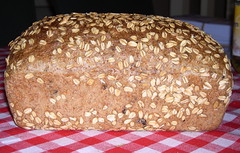
Tips for Beginning Runners
Are you thinking about hitting the pavement ( or treadmill in this weather) and don't know where to begin? I've got a plan for you that may help to get you going or ease any frustrations.
Plan your runs on the basis time of rather than distance. Plan to get out of the house for a certain amount of time. Forget how far you go. Forget how fast you go. Just get out the door and stay out. For many people, thirty minutes of activity is a good place to begin. That does not mean running for thirty minutes. It means staying on your feet moving forward for thirty minutes. If you can run, run. If you can walk, walk. Do whatever you can, but keep moving forward. If it gets too hard, slow down.
A program of alternating running and walking is a good way to begin. The first week that may mean running for 5 minutes and walking for 5 minutes to recover. In time, it may mean running 10 minutes and walking 2, or running 15 and walking 1. You can work your way up to running the whole time and then you can start running for distance.
A great way of tracking your progress is by keeping a running log. I like to train for 5k's and 10k's so I keep track of my time, distance, running route, and how I felt on my run. You can use any notebook or if you'de like to track it online, Runner's World offers a free one that even graphs your progress. Click here to try it out.
Also, I found a Beginners Training Program at the "Run the Planet" website if you want any additional ideas. Good luck with your running aspirations!!!






